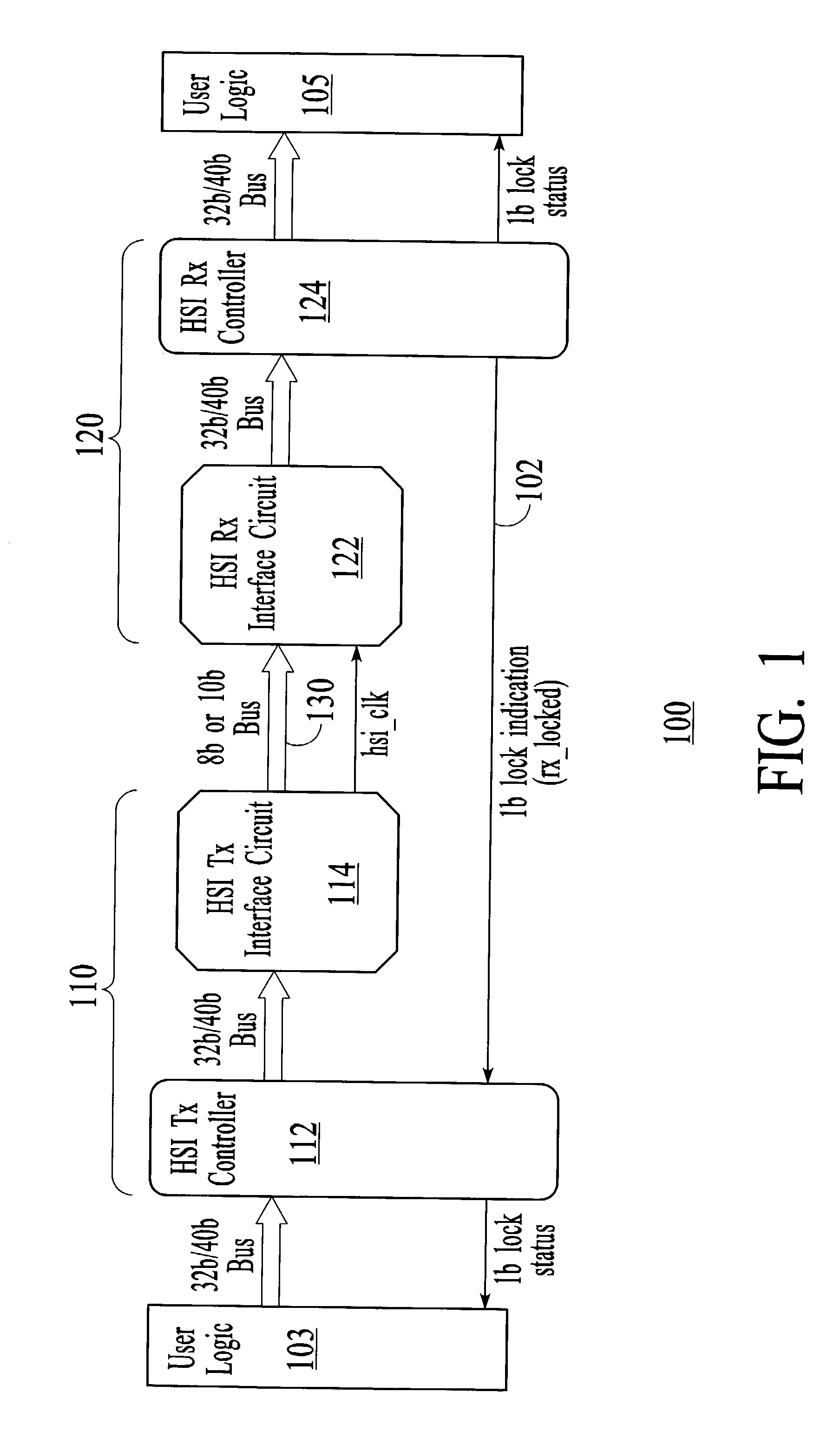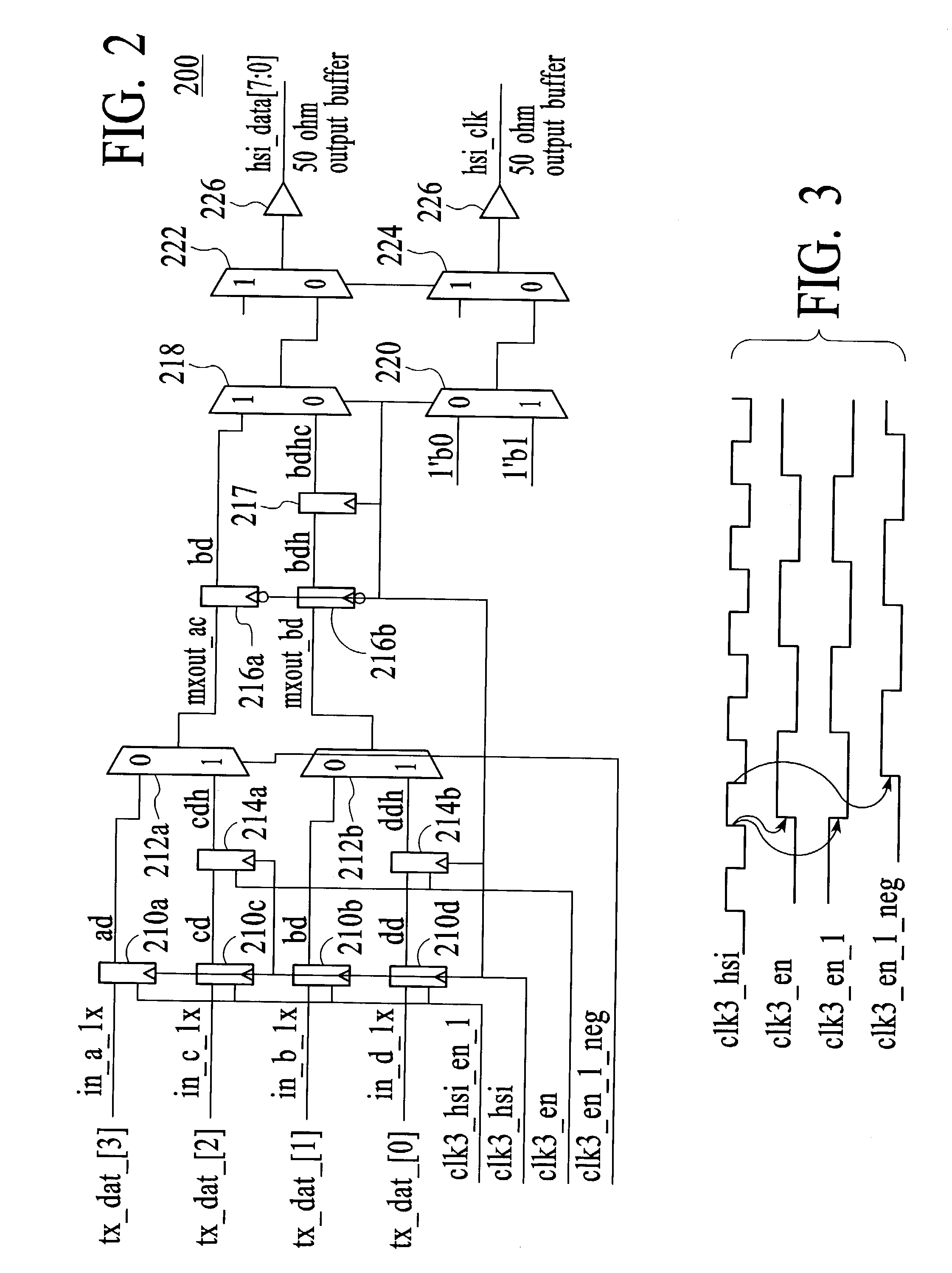High-speed chip-to-chip communication interface
a communication interface and high-speed technology, applied in the direction of dc level restoring means or bias distortion correction, baseband system details, instruments, etc., can solve the problems of requiring too many pins, pins adding cost, and need for higher-speed integrated circuits, and achieve the effect of easy scalabl
- Summary
- Abstract
- Description
- Claims
- Application Information
AI Technical Summary
Benefits of technology
Problems solved by technology
Method used
Image
Examples
Embodiment Construction
[0041]FIG. 1 is a block diagram illustrating a High-Speed Interconnect (HSI) link 100 for communicating data between chips in accordance with one embodiment of the invention. The HSI link 100 includes a transmitter 110 and a receiver 120 connected by an interconnect bus 130. In one embodiment, the transmitter 110 and the receiver 120 are implemented within separate chips (not shown) but within a same backplane of a high-speed electronic communication system. As shown, the transmitter 110 includes a HSI Tx Controller 112 and a HSI Tx Interface Circuit 114. The receiver 120 includes a HSI Rx Interface Circuit 122 and a HSI Rx Controller 124. The HSI Tx Interface Circuit 114 and the HSI Rx Interface Circuit 122 are preferably implemented as hard macro cells (or “hardmacs”), and the HSI Tx Controller 112 and the HSI Rx Controller 124 are preferably synthesizable. Also shown in FIG. 1 is user logic 103 that feeds data to the HSI Tx Controller 112 and user logic 105 that receives data fro...
PUM
 Login to View More
Login to View More Abstract
Description
Claims
Application Information
 Login to View More
Login to View More - R&D
- Intellectual Property
- Life Sciences
- Materials
- Tech Scout
- Unparalleled Data Quality
- Higher Quality Content
- 60% Fewer Hallucinations
Browse by: Latest US Patents, China's latest patents, Technical Efficacy Thesaurus, Application Domain, Technology Topic, Popular Technical Reports.
© 2025 PatSnap. All rights reserved.Legal|Privacy policy|Modern Slavery Act Transparency Statement|Sitemap|About US| Contact US: help@patsnap.com



